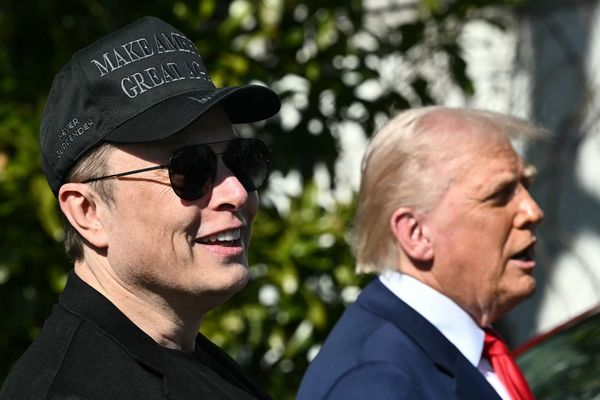
When he wasn’t wrestling his pet bull, slicing open the corpses of freshly hanged criminals, or studying the seasonal changes in sparrow testicles, John Hunter could be found probing the nether regions of female silk moths. The 18th-century surgeon, anatomist and all-round polymath was keen to find out if he could artificially inseminate the moths’ eggs by smearing them with male moths’ semen, using a tiny camel-hair brush. He could, and he did: eight eggs hatched successfully, in the first known example of IVF. “Thus then I ascertained,” he wrote, “that the eggs could be impregnated by art.” Emboldened by his findings, he went on to apply the same principle to humans, completing the first recorded artificial insemination in 1790, paving the way for modern fertility treatments.

The tiny moth eggs and silkworms – along with several human foetuses – are now displayed in little glass jars on shelves in the Hunterian Museum, one of London’s most extraordinary attractions, which finally reopens next week after a six-year revamp. The £4.6m project, part of a wider £100m redevelopment of the Royal College of Surgeons on Lincoln’s Inn Fields by Hawkins Brown architects, has reinstated the museum to its original footprint and breathed dazzling new life into this fascinating cabinet of curiosities.
It is not a place for the squeamish. More than 2,000 jars of pickled body parts – from brains and bladders to tumours and toes – now line either side of a long, atmospherically lit gallery, from which other rooms break off to tell the life story of the eccentric scientist.
We learn about Hunter’s country house in the then-rural area of Earl’s Court, where he kept an astonishing menagerie of creatures that he would conduct experiments on – and flay open at the end of their lives. “On the right of the house is the conservatory for his bees,” one visitor remarked. “On the left artificial rocks on which live eagles were chained.” It was a ghoulish Noah’s Ark, populated by geese, pigeons, rabbits, pigs, opossums, hedgehogs, buffaloes, leopards, dormice, bats, snakes, deer, fish, frogs, leeches, eels and mussels, as well as a jackal, a zebra and an ostrich – most of which would meet a sticky end in his preservation jars. A grassy mound at the bottom of the garden, meanwhile, housed two dens of lions. None seemed to intimidate the great scalpel-wielder. When a pair of leopards once broke loose, according to a contemporary account in the Times, “Hunter appeared on the scene and without a moment’s reflection, seized both animals and chained them up in their cages.”
Another room in the museum introduces Hunter’s central London base, on the site of what is now a Wetherspoons pub in Leicester Square, where his collection first began. From the front it looked like a refined Georgian townhouse, where his wife Anne would entertain society guests in the “conversazione room”. Around the back, however, was Hunter’s laboratory, where grave-robbers – or “resurrection men” as they were known – would haul their latest grisly finds to his dissection tables.

“We don’t try to hide the fact that most specimens in the museum probably come from bodies that were dug up for money,” says Hunterian senior curator, Bruce Simpson. “It was a huge industry at the time. Every person studying medicine had their own cadaver, which relied on grave-robbing on an industrial scale. Anatomists and pathologists would have specific requests, so particular bodies were robbed to order.”
One such desirable corpse was that of Charles Byrne, a 7ft 7in man known as the Irish Giant. Aware that Hunter was after his body, Byrne arranged to be sealed in a lead coffin and buried at sea, and even hired men to watch over him. But that was nothing that a £500 bribe from Hunter couldn’t undo. After the anatomist had boiled the flesh off its bones, Byrne’s skeleton became the museum’s best known specimen. After recent questions over consent, it is no longer on display: as the museum trustees put it, in no small understatement, much of the collection was acquired “in ways we would not consider ethical today”.
Ethics are certainly something visitors will be forced to ponder as they admire an entire vitrine of human teeth, of all sizes and ages. A caption explains that Hunter worked as a dentist in the 1760s – and was most likely involved in the practice of transplanting teeth from the mouths of poor people to those of the rich. “We work with a very complex and contentious subject,” says Simpson. “We’re trying to be open about everything, and use the collection as the starting point for a conversation. We don’t have absolute answers.” Where it knows the backstories, the museum has been careful to include them and there is no shying away from the brutal mores of the times.

While the previous version of the museum foregrounded the spotlit body parts over the wider stories, what comes across in the new layout – elegantly executed by exhibition designers Casson Mann – is the sheer breadth of subjects consumed by Hunter’s self-professed “grand curiosity”. He worked on more than 500 different species of animals and made numerous dissections of plants, studying everything from the circulation of insects, to the air sacs of birds, the function of the red corpuscles of the blood, to the regeneration of lizards’ tails – and discovering that bees do not collect wax but secrete it.
There are pickled penises aplenty (including one marinated in a deep red dye, giving it the look of aged chorizo), but the most astonishing stories come from the animal world. The preserved Suriname toad, for example, seems to be suffering from a severe case of acne, until you realise that the honeycomb of blisters on its back are in fact tiny eggs in different stages of hatching. The male toad distributes the fertilised eggs across the female’s back, where the skin grows over them, incubating them for 12 to 20 weeks, before they’re ready to burst open in a frenzied swarm of baby toads – a moment captured in ethanol here in perpetuity.

Hunter was also a firm believer that fish could hear (a subject hotly debated among naturalists of the time), and he tested his theory in Portugal in 1762. “I observed in a nobleman’s garden, near Lisbon, a small fishpond, full of different kinds of fish,” he wrote. “I desired a gentleman to take a loaded gun, and go behind the shrubs and fire it … The fish appeared to be all of one mind, for they vanished instantaneously into the mud.” Numerous fish ears hang suspended in ethanol, from the houndshark and bottlenose dolphin to the inner ear labyrinth of the Atlantic cod, as a testament to his investigations. A caption explains how he procured his eels from the local fishmonger, negotiated a puffer fish from a Cornish fisher and even wangled a whale over a deal in a pub.
More exotic specimens came from a plethora of dubious colonial connections, including friends in the East India Company, who would happily throw a few curious creatures in a barrel of spirits to bring back for him. For a time, Hunter and his knives had first refusal on every exotic animal that entered the country. His hunger for more and stranger beasts was insatiable. “If a foal camel was put into a tub of spirits and sent I should be glad,” he wrote to a friend in Africa. “Is it possible to get a young tame lion, or, indeed, any other beast or bird? If chameleons were sent, it should be in the spring. I want everything respecting the bee tribe, such as wasps with their nests, also hornets with theirs.”
The museum isn’t only dedicated to the colourful life of Hunter and his exploits on the dissection table. A series of later rooms track the evolution of surgery after his death, covering the development of microscopes and MRI scanners, along with detailed models, by sculptor Eleanor Crook, depicting the fiendishly complex process of open heart surgery and keyhole gallbladder removal. A time-lapse film of a 90-minute orthopaedic operation condensed to 10 minutes reveals the nimble ballet that surgical staff perform daily, while another screen tells the stories of patients and their surgeons. Harshly lit to evoke the modern hospital, some of the contemporary exhibits feel a bit flat, compared with the lurid museum of everything in the preceding galleries, a staggering story of one man’s attempt to capture the entire world in his glass jars.
There’s also a cafe, but beware – by then, you might well be put off your lunch.
• The Hunterian Museum reopens on 16 May. Entry is free.







